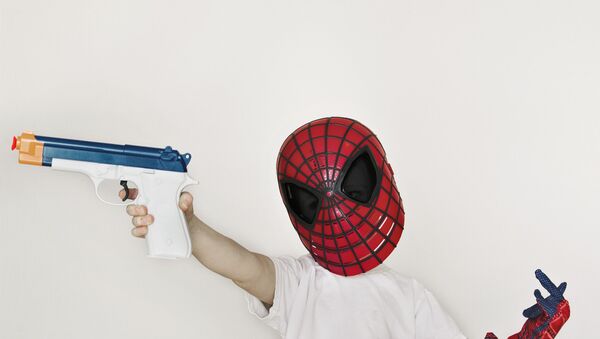For the study, researchers from Kyoto University showed children aged six — 10 months, examples of aggressive behavior, using cartoonish Pac-Manesque characters (agents) in the roles of bully, bullied and spectator in a series of scenarios.
Videos published in tandem with the paper depict the the range of different situations; in an aggressive interaction, one is squashed up against a wall; in a neutral interaction, the characters stand side-by-side. In others, the spectator intervenes in the schema. Participants' eye movements were tracked by a near-infrared eye monitoring system, which followed their gaze as they watched the videos.
After each clip ended, the children were presented with the characters from the video, and picked a favorite. The youngest children in the study had a "preference" for characters in situations where the third character intervened. The 10-month-olds similarly chose these characters — but at a much higher frequency.
"Six-month-olds regarded the interfering agent to be protecting the victim from the aggressor, but only older infants affirmed such an intervention after considering the intentions of the agent," the paper says.
Put simply, the 10-month-old babies had an understanding why someone was intervening, but the six-month-olds didn't. The researchers said this understanding was demonstrated by the older babies preferring clips in which interference in the aggression was deliberate, not accidental. This is an indication of how a child's understanding of intention rapidly develops between these two points.
Based on their studies, the researchers believe infants can learn the objectives an agent may be trying to achieve, understand the differences between positive and negative actions, and discern victim from aggressor in aggressive interactions.
They also believe the work sheds light on the developmental trajectory of perceiving, understanding and performing protective third-party interventions, suggesting human esteem for such acts, prevalent in thousands of stories across human cultures, is deeply rooted within our preverbal minds.
While the first study of its kind, it builds and touches upon other areas of research that have engaged scientists for years — although typically, experiments in the field have been conducted using animals rather than human subjects.
Primatologists such as Frans de Waal, Jill Pruetz and Christophe Boehm have shown mankind's closest analogue in the animal kingdom, apes, frequently treat each other with empathy, compassion, and self-sacrifice. For instance, gorillas won't take food if doing so causes another gorilla harm, and even rats have been demonstrated to be capable of empathy — faced with a choice between two containers, one with food and another with a trapped companion, rats opt to rescue their companions before feasting.
Other studies have detected other innate qualities in infants, some of which may surprise. All babies are born with an intrinsic sense of rhythm, for instance. This was established by playing drum beats to sleeping 2- and 3-day-olds. The sequences occasionally skipped a beat, and when this happened, electrodes attached to the babes' scalps revealed they exhibited brain responses indicating their expectations had been contradicted — meaning they acutely sensed the rhythm.
Some researchers even believe babies intuitively understand quantum mechanics, the set of rules governing the behavior of elementary particles, which state a particle (such as an electron or photon) is neither here nor there, but both places at once — and everywhere in between.
Human experience of reality prevents us from comprehending quantum mechanics (even Albert Einstein had difficulty grasping it), but newborn babies aren't accustomed to reality on any scale.
Up until the age of three months or so, babies lack an understanding that objects can be in only one place at one time — games such as "Peekaboo" demonstrate infants think a hidden object can be absolutely anywhere at any time.


